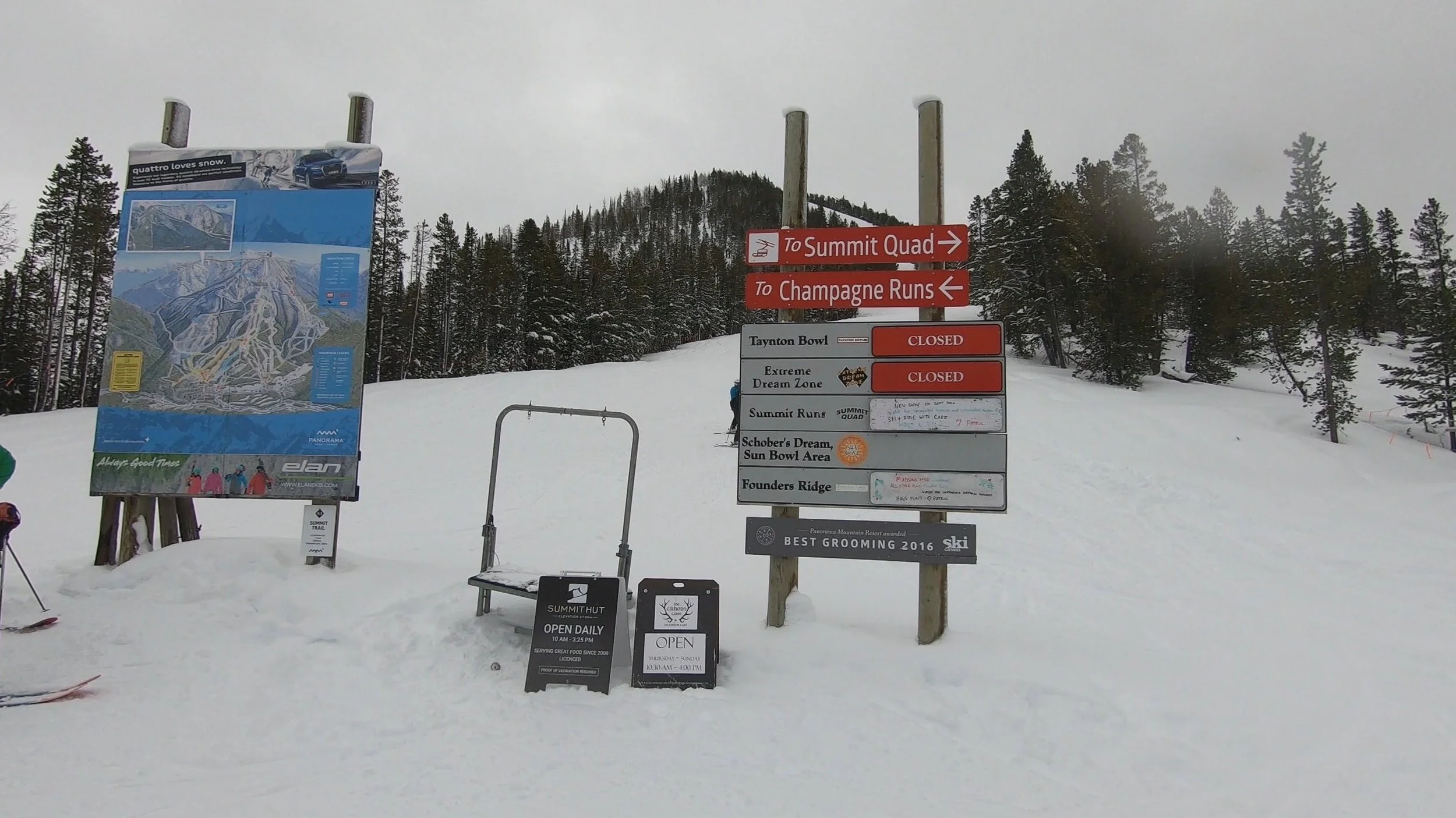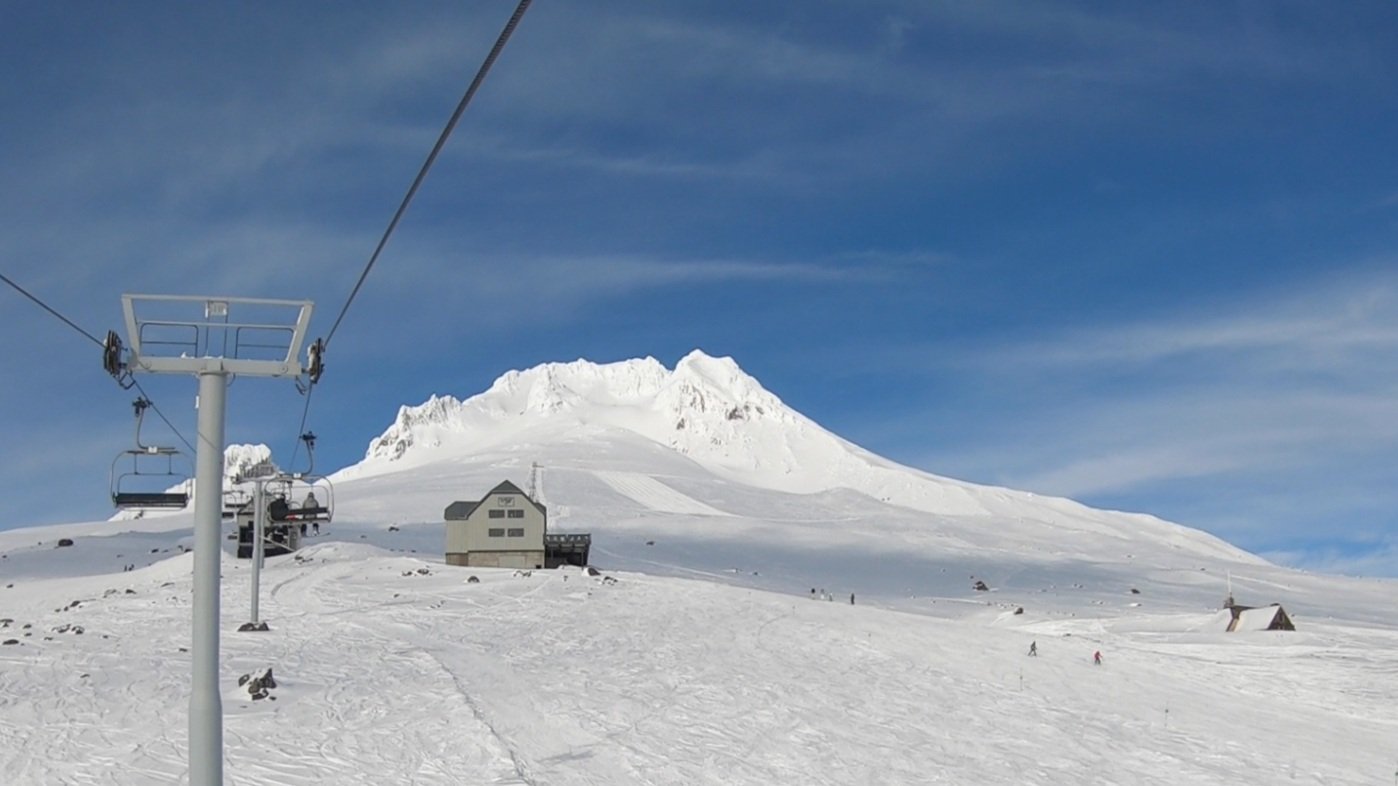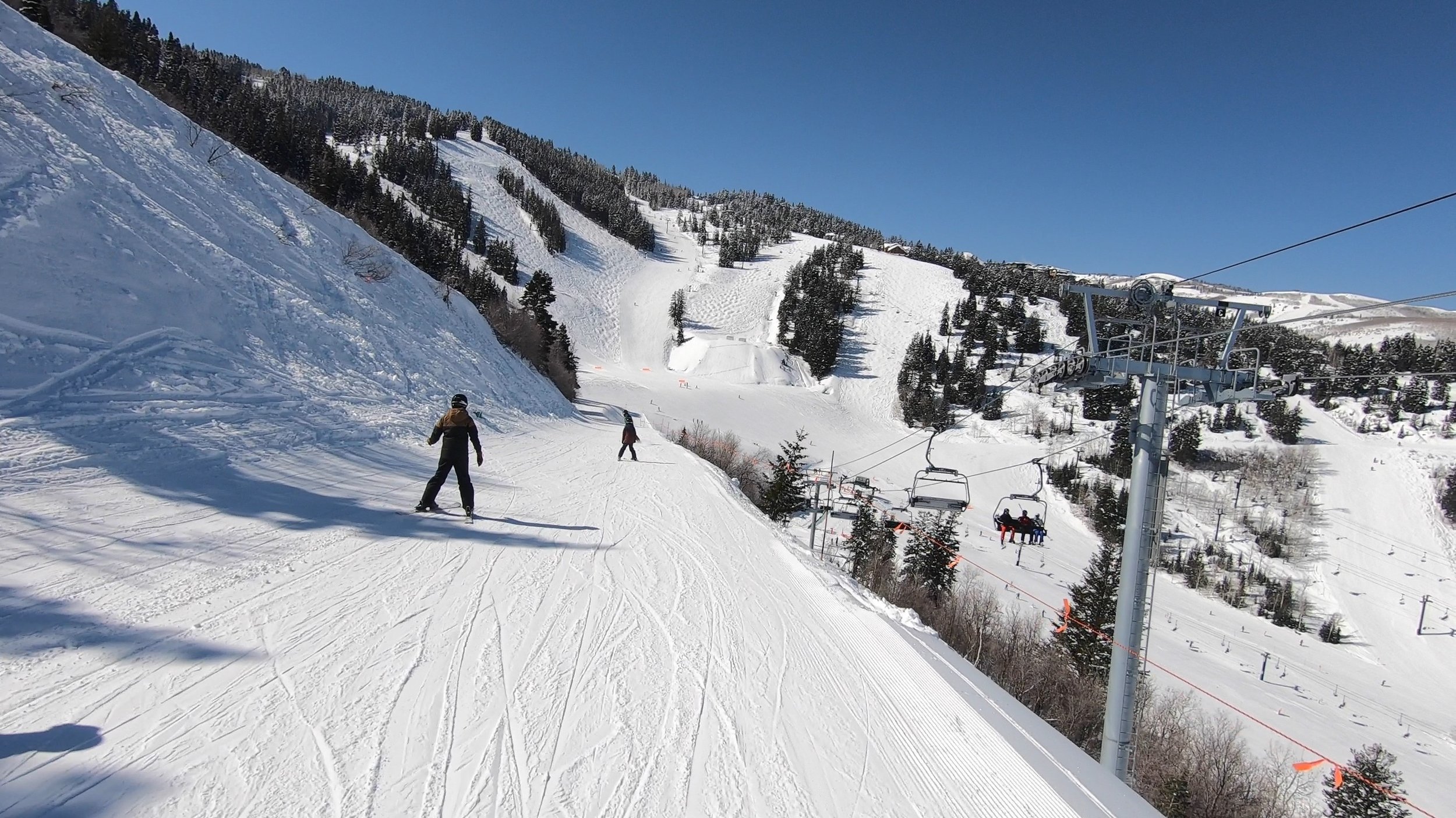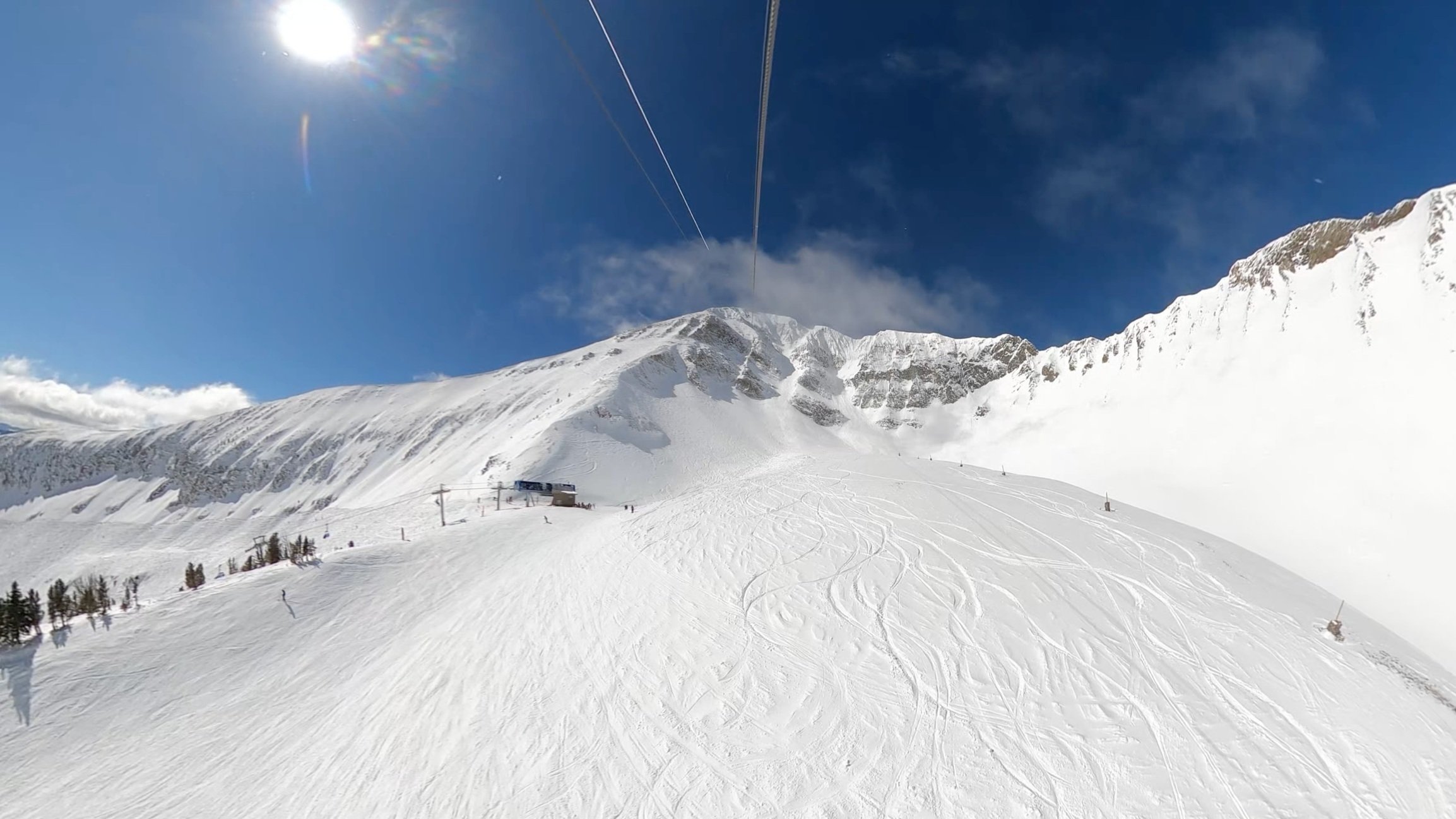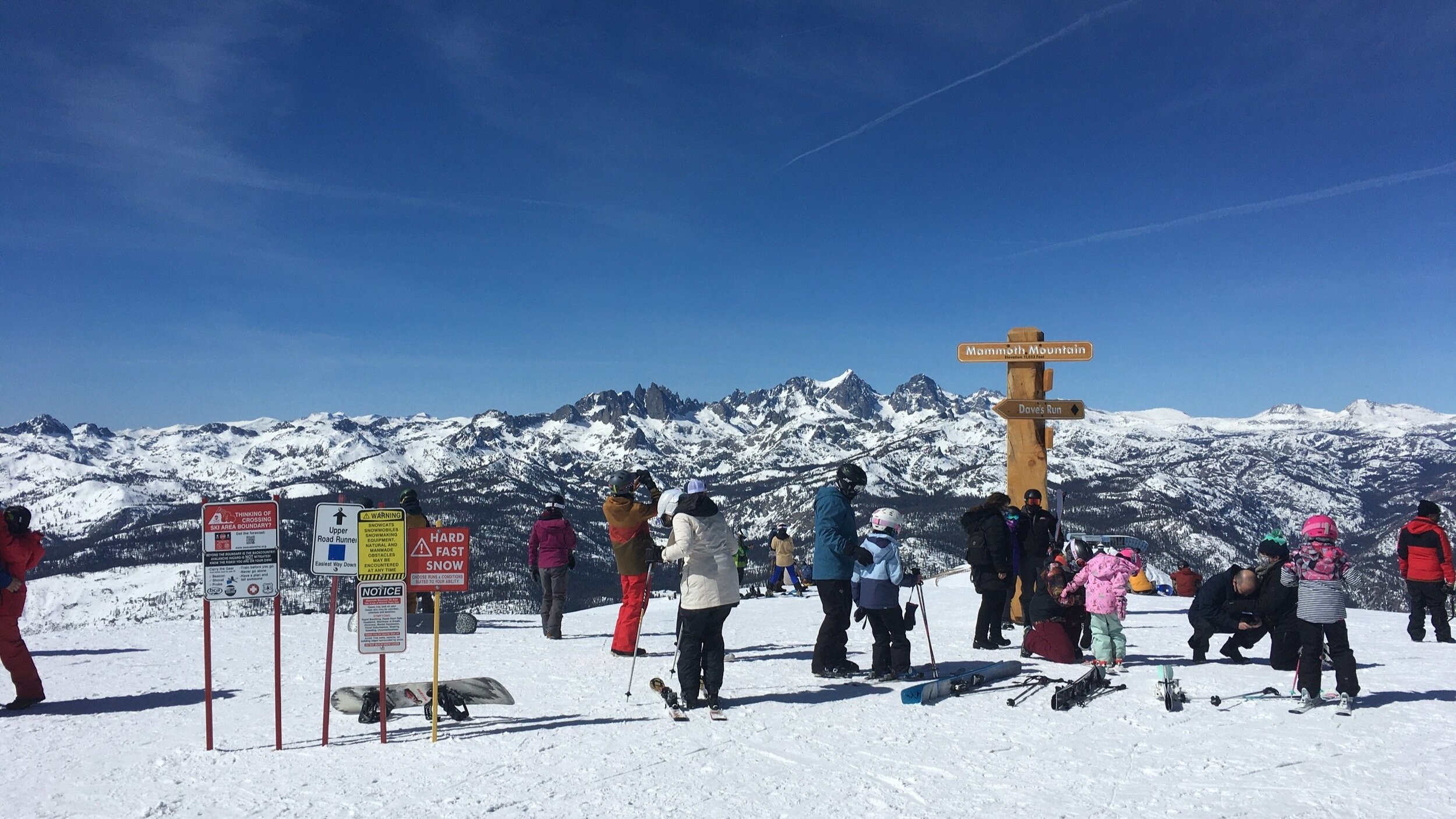North American Ski Resort Regions Ranked By Reliability: 2023-24
When you’re planning a ski trip, there’s nothing you want more than the ski resort to live up to the hype. After all, the best mountains offer days of terrain to explore, awesome snow conditions, and incredible facades, especially in upper mountain areas.
But there’s nothing more disappointing than arriving at your destination of choice and having the whole experience be a flop. While many ski resort regions experience predictably reliable conditions, others can leave guests in less-than-ideal situations, including massive terrain closures, lengthy snow droughts, or even circumstances that can force full trip cancellations.
Full-fledged, multi-day destination vacations are really only practical to plan a few months in advance, and you can’t really tell weather conditions at that point in time. As a result, it’s important to choose the right ski region when you’re planning a trip so you can actually hit the terrain that’s been advertised to you.
There’s nothing more disappointing than getting to your resort of choice, only to find the terrain you wanted to ski or ride closed.
What Exactly Does Ski Region Reliability Mean?
When we touch on ski region reliability, we’re intending to provide a holistic look at terrain openings, slope quality, and snow consistency across ski regions. To put it another way, if we were to rank these regions based on snow quality alone, the order would be a lot different.
Note on Regions Covered in this Ranking
This list is intended to cover areas that people often plan overnight or fly-to vacations to that require well-in-advance planning. As a result, we won’t be covering more regional areas, such as southern New England, the Midwest, Mid-Atlantic, and Southern California.
We’ll also note that most of the major regions we’re covering in this video are probably more reliable than these localized areas—which, to put it plainly, don’t attract much destination traffic for a reason.
#11: Oregon
Coming in at the bottom of this list is the state of Oregon, which at a first glance may look pretty promising for skiing and riding. However, the state just has an unfortunate barrage of qualities that significantly complicate on-mountain operations.
The state is distinct in that all of its major ski resorts are either on or immediately adjacent to a volcano, resulting in unique microclimates and impressive snow totals throughout a typical season. But these snowstorms aren’t exactly gentle, and the extreme conditions in Oregon’s alpine environment make it incredibly difficult for resorts to operate large parts of their skiable terrain during the core of winter. As a result, during a typically-timed ski trip, guests shouldn’t expect to be able to ski any of the high-alpine footprints at these resorts, with bowl terrain openings being much more a special treat than a rite of passage.
Lower-mountain terrain zones are a lot more reliable, but the region can still face incredibly wind-blown snow from the storms, as well as occasional ice and rain. Oregon’s overall ski slope conditions are much better than some of the other regions higher up on this list, but few other areas face such profound closures across their skiable terrain during the core winter season.
Best Time To Plan a Ski Trip to Oregon
If you want to visit Oregon, you’ll probably find the best snow conditions in February. But if you actually want to ski or ride the whole mountain, the best time to go is April, once the crazy weather patterns have died down.
Noteworthy Resorts in this Region
Mount Bachelor, Mount Hood Meadows, Timberline Lodge, Mount Hood Skibowl
#10: Lake Tahoe
Next up on this list we have the Lake Tahoe region, which is known for its massive snow totals and unparalleled views. But the region just suffers from such a barrage of shortcomings that it’s rarer to get in a good day of skiing than it is to have your trip go bust.
Tahoe’s conditions really only go one of two ways: feast or famine. While Tahoe sees comparable or perhaps even better snow totals when compared with the best ski regions on the continent, the area regularly goes for long spells with no snow that can last for weeks on end. Tahoe’s weather never gets too cold, but the lack of snow can result in thin cover and icy conditions. These circumstances tend to make for extremely limited expert and off-piste terrain offerings, meaning you may not be able to even access the iconic bowls, chutes, and glades that Tahoe is best known for.
But even when conditions are “feasting”, it doesn’t necessarily spell good news for your trip. When it snows in Tahoe, it dumps, and storms typically involve multi-foot snow events. In fact, the snow totals can be so extreme that you may not even be able to get to your resort under the worst circumstances. The craziest storms can mean highway closures of hours, or even days, and after a certain point, it may not even make sense to go on the trip anymore. And during these times, it’s not exactly like the resorts are spinning the majority of their lifts. It can take days to conduct proper avalanche mitigation and equipment dig-outs after multi-foot storms, meaning you could be stuck at the resort with limited to no skiing and no way to get out.
There are few places with better views than those from Tahoe-area ski slopes, but the region’s weather patterns can lead to anything from conditions disappointment to extreme stress. If you’re looking to plan a weeklong destination vacation and don’t want to chance the whole thing getting wrecked, there are a lot better options.
Best Time To Plan a Ski Trip to Lake Tahoe
The best time to go to Tahoe is really hard to say. It’s usually February or March, but you can get snowed in or experience dry spells during even the “best” months. Early April is best for reliable road conditions and spring skiing, but if it’s been a bad season, terrain openings might be really limited by then.
Noteworthy Resorts in this Region
Palisades Tahoe, Heavenly, Kirkwood, Northstar, Sierra-at-Tahoe, Mount Rose, Sugar Bowl, Diamond Peak, Homewood
#9: Destination East Coast (Vermont/Maine/Quebec)
The one East Coast area we’ll be covering on this list (the others attract substantially local traffic), this triad of states and provinces at least gets most of its terrain reliably open during the best months of the season and doesn’t typically see crazy weather that would cause regular resort closures. In addition, the region’s northernmost resorts see reasonably strong snowfall totals each winter, allowing for at least somewhat of a genuine natural snowfall base. To ensure resilience against less-than-ideal weather, many resorts across the region have made significant investments in snowmaking infrastructure.
But while the best resorts maintain a certain level of reliability that makes a mid-winter trip fairly dependable, Vermont, Quebec, and Maine skiing and riding just cannot compare in this respect to true fly-to destinations. The Northeast region sees numerous freeze-thaw cycles throughout the winter, making ice and thin cover common occurrences. Rain and days-long warm spells can also be a factor, especially in the early and late seasons—as can extremely frigid temperatures, the effects of which are made worse by humid air.
In addition, especially in southern Vermont, the region just doesn't receive the same truly abundant snowfall levels as resorts west of the Mississippi. Even when open, terrain without snowmaking will broadly exhibit thin cover throughout the entire season. This even holds true in the highly unusual event of an East Coast powder day, where you might find yourself clipping dirt, rocks, or tree stumps under the fresh layer of snow. Want to venture into the woods at any of these resorts? Having rock skis is a must.
So Vermont, Maine, and Quebec are really the most dependable places to ski or ride in the Northeast, especially when it comes to the large resorts with built-out snowmaking infrastructure. But if you don’t want to stick to the groomers, you’ll pretty much always be facing variable or thin cover conditions, and even if you do stick to the groomers, freeze-thaw cycles and icy conditions make regular appearances.
Best Time To Plan a Ski Trip to Vermont, Maine, or Quebec
For the best conditions and most reliable terrain openings, the best time to go is February. Half the mountain will be closed at most resorts in December and early January, and while March can be a ton of fun in good seasons, rain and warmer weather can start to wipe away the snow base by this time.
Noteworthy Resorts in this Region
Killington, Stowe, Sugarbush, Jay Peak, Okemo, Stratton, Smugglers' Notch, and Mount Snow, Vermont; Sunday River, Sugarloaf, and Saddleback, Maine; Tremblant, Le Massif, and Mont Sainte Anne, Quebec
#8: Washington State / Pacific British Columbia
Moving back to the West Coast, Washington State and the Coast Mountains of British Columbia, which include Whistler Blackcomb, are home to pretty monumental snow totals each winter. The region generally sees similar climate conditions to Oregon, but its ski mountains are not on crazy volcanoes, and hence remain open much more reliably. In addition, long spells without any precipitation are incredibly rare throughout the season.
But this region does have a huge catch—and that’s wet, temperate conditions. There is a ton of moisture in the air at these resorts, making for wet, heavy snow and thick fog, especially at the Washington resorts. As a result, while the mountain might be fully open, you may not be able to see much of it.
And even if you get there on a powder day, the conditions may make for snow that’s more arduous than fun. Temperatures hover just around or below the freezing mark, meaning that especially in lower elevations, accumulation can come down as rain. With regular freeze-thaw cycles, if you go off-piste, you might find conditions ranging from ice to slush to unwelcome chunks of both. Higher-elevation areas, especially at mountains like Whistler Blackcomb, are less susceptible to these conditions, but they can still happen.
Best Time To Plan a Ski Trip to Washington State or Pacific British Columbia
The best month to go to this region is February, which offers the most consistently cold and snowy conditions. Going earlier or later than that increases your chances of a rain spell.
Noteworthy Resorts in this Region
Crystal, Stevens Pass, Mount Baker, Summit at Snoqualmie, and Alpental, Washington; Whistler Blackcomb, British Columbia
#7: Inland Northwest / Southern Interior British Canada
Moving just a bit east of the Cascades, the quartet of Southern Interior British Columbia, Eastern Washington, Northern Idaho, and Northern Montana all share quite similar climates to one another. These areas tend to be drier than the Pacific Northwest, but they do fall victim to some of the same weaknesses brought about by West Coast-influenced weather.
On the plus side, this area tends to offer reliable snow throughout the winter. Resorts see strong early-season accumulation, meaning they can be great bets for earlier in the season, such as late December or early January. Unlike many other regions that take significantly longer, resorts in this region often have 100% of their terrain open by this time.
However, most of the resorts in Southern Interior British Columbia and the Inland Northwest sit at pretty low elevations compared to the Rockies, and they see somewhat heavier snow than resorts in that region. And while this snow is still light enough to be much more enjoyable than that of Western Washington, fog is an extremely common occurrence at every resort in this region, with visibility being just as much of an issue as the Washington state mountains. If you want a resort you can actually see, other regions might be better.
Due to the moderately low elevation, rain isn’t out of the question at some of these mountains. Rain spells can occur once or twice a year at some mountains, but much more regularly at others. And even though most resorts succeed in fully opening within the first few weeks of the core winter season, mid-season closures, especially on expert slopes, aren’t out of the ordinary.
Best Time To Plan a Ski Trip to Eastern Washington State, Northern Idaho, Northern Montana, or Southern Interior British Columbia
If you do want to visit one of these areas, the best time to go for overall conditions is probably late February. However, if you want to go for the best conditions relative to other North American areas, January is probably your best bet.
Noteworthy Resorts in this Region
Schweitzer and Silver Mountain, Idaho; Whitefish, Montana; 49 Degrees North, Washington; Fernie, Panorama, Kimberley, Red Mountain, and Big White, British Columbia
#6: Southern Colorado
The first major Rockies region on this list, Southern Colorado is home to high-alpine resorts that boast some of the most incredible snow retention on the continent. The region’s dry climate makes for light, enjoyable accumulation, and by the time a resort amasses enough of a base, it’s typically able to keep all of its major terrain zones reliably open.
But it can take awhile for this base to accumulate, because Southern Colorado’s Achilles heel is its lack of natural snowfall (Wolf Creek is the notable exception). There’s a lot to like about the snow quality at resorts in this region, but in typical seasons, the raw quantity falls short of other Rockies destinations.
Snowmaking operations help maintain a base-level of resiliency, but terrain openings can be quite scant if you plan a trip earlier in the season. While this region hosts some incredible expert slopes, this type of terrain faces especially fickle openings—and the toughest runs may only open a handful of days each season (if at all).
Best Time To Plan a Ski Trip to Southern Colorado
Southern Colorado is reasonably dependable if you go later in the season, but you’ll be setting yourself up for disappointment if you’re expecting multiple powder days or a fully open footprint within the first few months of the season. If you want to visit Southern Colorado, go in March after the resorts have had a few months to build up a base.
Noteworthy Resorts in this Region
#5: Non-Cottonwoods Utah
Next up on this list we have our first major Utah region, the non-Cottonwoods ski resorts just outside Salt Lake City. These Wasatch Range mountains feature easy access, with rare access road closures, and they offer strong, reliable terrain openings each winter. Utah’s unique climate environment makes for exceptionally dry conditions and strong snowfall totals, allowing for consistent and enjoyable slopes during the main part of the winter season. And if Mother Nature doesn’t deliver, most of the resorts in this region have widespread snowmaking that allows for a solid baseline of resiliency (with Powder Mountain being the notable exception).
However, Utah’s non-Cottonwoods resorts sit at lower elevations than destinations in other parts of the Rocky Mountains. As a result, these mountains see somewhat more variable conditions than some competitors with similar snow totals, especially during bad seasons. Guests visiting non-Cottonwoods Utah resorts will probably face variable off-piste conditions prior to mid-January unless it’s an incredible winter, and will likely start to see major terrain zones become dicey, especially in lower elevations, by the last few weeks of March.
Best Time To Plan a Ski Trip to Non-Cottonwoods Utah
For the best experience—and to hedge against snow melt in bad seasons—those hoping to visit this region should aim to go between late January and mid-March.
Noteworthy Resorts in this Region
Park City, Deer Valley, Snowbasin, Powder Mountain, Sundance
#4: Central and Northern Colorado
Next up we have Central and Northern Colorado, which see similar snow quality to the resorts further south in the state but generally just see more of it. These higher snow totals allow the resorts in this area to get terrain open faster and provide very reliable experiences throughout the season.
But this area of Colorado, especially when it comes to the resorts on the I-70 corridor, has some particularly exposed above-treeline bowl terrain. Due to wind and visibility issues, large high-alpine portions of these resorts either face windswept, thin cover conditions or fickle openings, especially in the earlier months of the season. And while natural snow does come reliably, it’s often a month or two before there’s an abundant base on non-snowmaking trails. As a result, if you want to do any type of off-piste terrain, it’s probably best to wait until at least mid-January to ensure this type of terrain has sufficient cover.
Best Time To Plan a Ski Trip to Central and Northern Colorado
Northern and Central Colorado generally won’t disappoint when it comes to an in-advance vacation, but if you specifically want to ski or ride the high-alpine bowls or particularly technical terrain, you might want to wait until the later months of the season. For the best results, we recommend visiting between late February and early April.
Noteworthy Resorts in this Region
Vail, Beaver Creek, Breckenridge, Aspen/Snowmass, Steamboat, Keystone, Arapahoe Basin, Copper, Winter Park, Loveland
#3: Canadian Rockies / Non-Southern Interior British Columbia
When it comes to avoiding the freeze-thaw cycles that have become more and more common across other ski resort regions, the far-northern resorts of the Canadian Rockies and Interior British Columbia may come across as an attractive proposition.
These Western Canada resorts don’t generally see the same snow totals as the best options in the States, with average accumulation numbers close to the lower end of the central Colorado destinations, but consistently-below-freezing temperatures result in outstanding preservation. The longer winter means these resorts are often able to open faster than their US counterparts, even without snowmaking assistance, meaning that from a snow and terrain standpoint, they’re rare strong bets for late December and early January.
However, this region suffers from one huge Achilles heel: extraordinary cold spells. A few times per season, the region sees incredible temperature plunges of as low as -40 degrees Celsius (or -40 degrees Fahrenheit). Temperatures this cold are hard to bear for just about everyone, and even if you think you can handle them, the resorts may not even be able to spin their lifts under the most extreme circumstances. Conditions are usually great when it’s not this cold out, but if you’re booking a trip well in advance, it’s hard to predict when one of these freezing fronts will occur—and they can occur for several days before things warm up to palatable temperatures.
It’s also worth noting that a few resorts in this region, namely Kicking Horse and Revelstoke, feature exceptional vertical drops. Upper elevations are pretty consistent, but in the lower elevations at places like these, guests may face similar circumstances, such as wet snow and variable conditions, to the resorts further south in the Kootenay region.
Best Time To Plan a Ski Trip to the Canadian Rockies and Non-Southern Interior British Columbia
This region is pretty reliable snow-wise throughout the entire core winter, but for your best chance at avoiding a cold spell, you might want to try for a late February or March trip.
Noteworthy Resorts in this Region
Lake Louise, Banff Sunshine Village, Mount Norquay, and Marmot Basin, Alberta; Revelstoke, Kicking Horse, and Sun Peaks, British Columbia
#2: Northern U.S. Rockies (Wyoming / Southern Montana)
Wyoming and Montana sit just below the Canadian Rockies we just discussed, and the Rocky Mountain ski resorts in these states benefit from the same consistently-below-freezing temperatures and reasonably dry climate conditions
While these states are south of Canada, they stand out with one notable trait: much better resistance to extreme cold spells. In addition, the resorts in both states, especially those in the Teton and Madison Ranges, tend to see higher snowfall totals than their Canadian counterparts, making for more reliable terrain and less packed snow conditions.
This Northern Rockies region isn’t impervious to downsides: snow droughts can occur even at the best mountains, and the most extreme terrain at resorts in these states can take awhile to open. In addition, some of these resorts involve unfavorable terrain aspects, which make for crusty conditions after a few sunny days with no snow. As a result, late-season ops can be a bit of a gamble—and might be better elsewhere on the continent.
But for most visitors, Wyoming and Southern Montana are tough to beat for consistent, very good conditions no matter what time of season you go.
Best Time To Plan a Ski Trip to Wyoming and Southern Montana
The best time to visit Wyoming and Montana is probably February. But given the consistent snow and temperature conditions, you’ll probably still have a good time if you go as early as the week after Christmas or as late as mid-March.
Noteworthy Resorts in this Region
Jackson Hole and Grand Targhee, Wyoming; Big Sky, Montana
#1: Cottonwoods Utah
If you’re looking for a dependable ski vacation, it’s hard to find a better place than the Cottonwoods of Utah. The Big and Little Cottonwood Canyons see world-class snow totals each winter, allowing for incredibly consistent terrain openings and not just a decent baseline of conditions, but powder days being likely for a weeklong trip. In the Cottonwoods, prospective visitors can expect high-quality conditions and full lift-served resort openings as early as the December holiday week.
However, Utah’s Cottonwoods are by no means perfect. The extraordinary snow totals make for tricky avalanche conditions, and many slide-prone areas can take days to conduct mitigation work on after the last snow event. In addition, hike-to terrain, especially when it comes to particularly extreme features, can take awhile to open.
After particularly heavy snowfall, the Cottonwoods resorts may be forced to close down entirely and sequester everyone inside to conduct avalanche mitigation, meaning the resorts won’t only be closed, but that nobody can get in or out of the resort property. And finally, the laws of nature do still apply to this region, and freeze-thaw cycles can occur after a few sunny days with no snow, especially on terrain with less favorable exposure aspects.
So no, Utah’s Cottonwood Canyon mountains are not perfectly reliable. But when it comes to planning a trip and having your mountain operate as advertised, there are few better regions than this one.
Best Time To Plan a Ski Trip to Cottonwoods Utah
Thanks to the region’s unique microclimate, youu can pretty much have a good Cottonwoods vacation any time between late December and early April. For the best conditions and hike-to terrain openings, try for late February or March.
Noteworthy Resorts in this Region
Destinations That Don’t Fit Into A General Region
Finally, there are a few destination mountains that are in such remote places and distinct climates that it’s hard to group them as part of a general region. In that vein, we wanted to touch on where each of those mountains would fall should we include them on this list.
Mammoth
While three hours south of Tahoe, Mammoth is actually a substantially more reliable mountain than its California counterparts.
Dry spells do sometimes occur, but the resort’s much higher elevation and colder temperatures allow for lighter, drier snow and much better preservation. However, Mammoth is not closure-proof, and upper mountain areas are quite prone to weather and wind holds.
If you want to take a destination trip to California, Mammoth is probably the best choice for reliability, although it still falls behind many regions further inland. We’d place it just above Washington State and Pacific British Columbia in our ranking.
Best Time To Plan a Ski Trip to Mammoth
If you want to go to Mammoth, the best time is probably February or March, but the resort does offer some incredible spring skiing as well.
Sun Valley
Sun Valley is really the only destination ski resort in central Idaho, and it’s the only resort in the entire state that genuinely attracts visitors from across the country. But there’s a reason why Sun Valley doesn’t have any nearby competitors, and the resort probably drives more visits thanks to its brand than its on-mountain conditions.
Sun Valley is by no means truly unreliable, and it receives high-quality snow. However, the resort just does not see the same quantity of accumulation as Rockies destinations in states east of it. This, combined with a generally east-facing footprint, makes for variable conditions in off-piste areas and rare expert terrain openings. In terms of reliability, we’d rank Sun Valley above the East Coast but below Washington and Pacific British Columbia.
Best Time To Plan a Ski Trip to Sun Valley
The best time to visit Sun Valley is February, after enough of a natural base has accumulated and before spring freeze-thaw cycles begin to seriously impact the slopes.
Taos
Finally, let’s discuss Taos, which is really the only destination ski resort in the state in New Mexico. Taos’ dry climate and high elevation make for surprisingly excellent snow when conditions are good, but we’re still talking about New Mexico here, and the resort regularly sees warm spells and long periods of no new snowfall. Taos’s high-alpine terrain sees variable openings, and we’d rank it above Oregon but below Tahoe for reliability.
Best Time To Plan a Ski Trip to Taos
Taos is a late-season resort, and it’s best in March, once natural snow has filled out the hairiest terrain. Thanks to its elevation, snow preservation tends to be strong.
Final Breakdown
So that’s our ranking of the overall reliability of the major North American ski resort regions. Here’s a full breakdown of the average PeakRankings Resiliency Scores of the resorts in each region, which we used to inform the order of this list:
*includes tentative scores for mountain reviews that have not yet been published
No region is perfect, and even the best regions involve certain circumstances that could result in a few vacation days going bust. But some areas are way more dependable than others, and just because a state or province sees impressive snowfall totals doesn’t mean that snow will come consistently, or all the resort’s terrain will be open, or that temperatures will even be bearable.
How’d we do? Would you change the order? We’d love to hear from you, so if you have any thoughts, hit us with a comment below!
For more information on ski resort reliability and over 90 North American ski resort destinations, check out our overall 2023-24 North American ski resort rankings.

